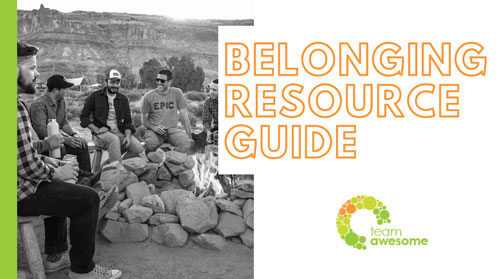The simplest form of building relationships in the world is basic acknowledgement of one another. Yet somehow, there are so many chances to do this throughout our day that we do not engage. It may be as simple as making eye contact and acknowledging the other person either verbally or non-verbally in a way that states, “Hello fellow human. I see you.”
Have you ever been in the checkout line at a store where the person checking you out has a friendly voice, friendly words, but never actually bothered to look up and see you? It didn’t feel genuine, and the service effort fell flat because it was the same empty line she fed to the person in front of you. The difference is made in acknowledging the person.
I am amazed at how often this still happens in our workplaces. How many times people pass each other without acknowledgement, even though they work within feet of each other for months, even years. In fact, this is a very keen indicator of the workplace culture that you are in. This can be a helpful observation for job seekers during the interview process; if people are acknowledging each other, saying hello, and making eye contact, that is a good sign for the culture. If people tend to be working next to each other without connecting, perhaps keep moving.
Leaders, it starts with you.
As leaders, take a moment for some self-reflection and accountability. Are you acknowledging those around you? Is this the culture both verbally and non-verbally that you set with your team? If not, it starts with you. It is up to you to make a concerted effort to be present, make eye contact and really see the people around you. From there it is also your responsibility to cultivate this culture with your team. The difference is undeniable to an outsider walking into your workplace, and soon enough the insiders will notice the shift too.
Make this the week where every day you make a mindful effort to be present, make eye contact, and engage with the humans around you. Do it for a full week; at work, at the grocery store, and with your family. Observe how it may feel and how others may react to you differently. If you trip up, observe that too. At the end of one week, you will find that you had some delightful moments worth continuing.



Recent Comments